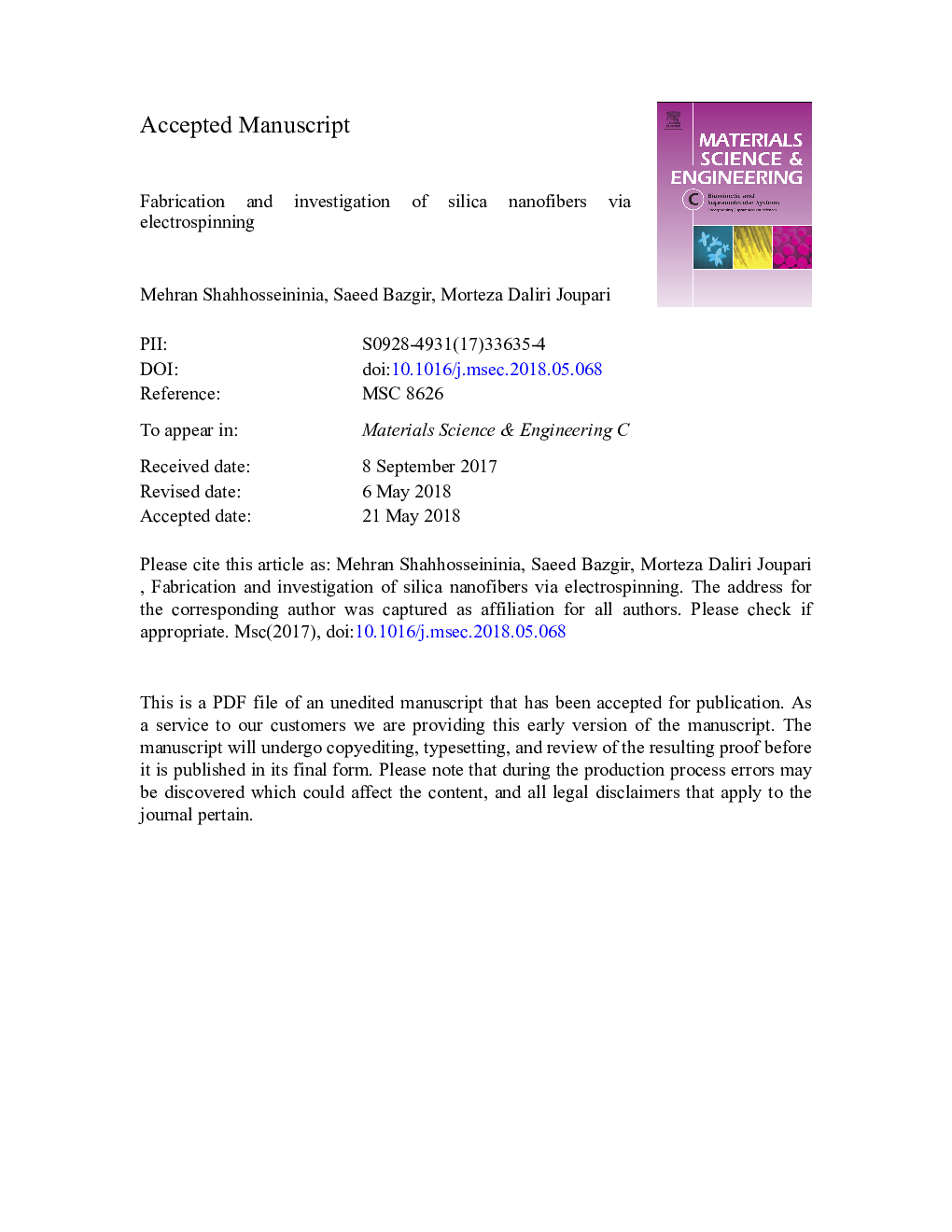| Article ID | Journal | Published Year | Pages | File Type |
|---|---|---|---|---|
| 7866054 | Materials Science and Engineering: C | 2018 | 26 Pages |
Abstract
Electrospinning is a versatile and cost-effective method for fabricating nanofibers of different materials suitable for various applications. In this work, silica nanofibers have produced using the electrospinning method followed by the heat treatment. To fabricate silica nanofibers, polyvinylpyrrolidone (PVP), tetraethyl orthosilicate (TEOS) and Butanol were used to prepare the dope solutions. The optimized concentration for polymer in the dope solutions was then measured at 0.1â¯g/ml. The electrospinning process was conducted under the optimum circumstances of voltage, injection flow, tip to collector distance, ambient temperature (25â¯Â°C) and the humidity of 47%. Having conducted the thermal analysis (TG/DTA), electrospun fibers were exposed to thermal analysis in three different temperatures of 500, 700, and 1000â¯Â°C for 5â¯h. Following this, the morphology and the diameter of the fibers, as well as the chemical composition and the crystallinity of each sample were analyzed using scanning electron microscopy (SEM), Fourier transform infrared spectrometer (FT-IR), and x-ray diffractometry (XRD), respectively. The noteworthy conditions of 700â¯Â°C and 5â¯h of heat treatment (i.e., calcination) have provided satisfactory results in terms of silica nanofibers morphology and fibers; diameter, i.e., 110 and 600â¯nm. For cytotoxicity assay, murine fibroblast cells L929 were cultured on a mat of as-spun silica nanofibers. After 24â¯h and 48â¯h cultivation time, samples showed no evidence of cytotoxicity effect, which will be a promising result.
Related Topics
Physical Sciences and Engineering
Materials Science
Biomaterials
Authors
Mehran Shahhosseininia, Saeed Bazgir, Morteza Daliri Joupari,
